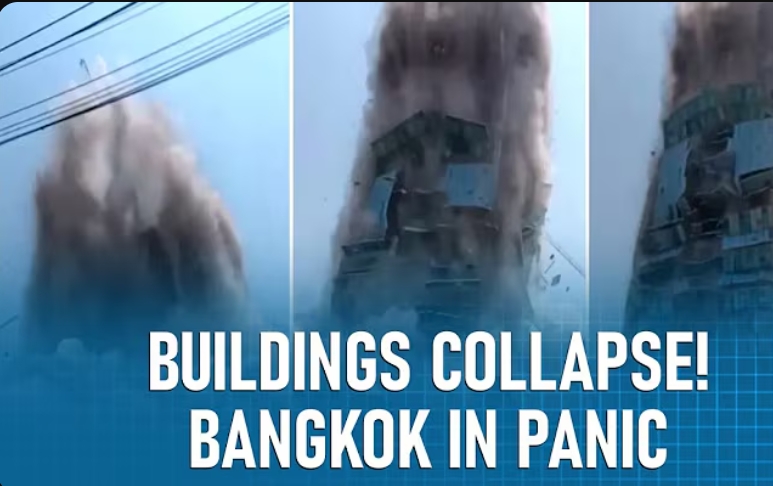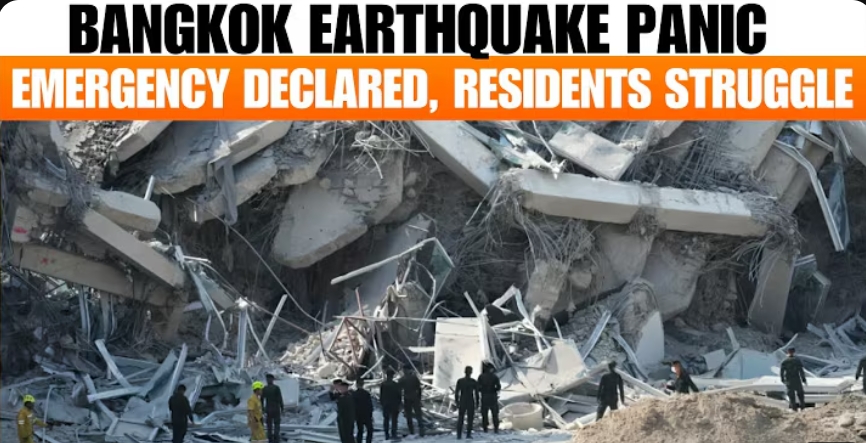The Bangkok Earthquake sent shockwaves through the city, leaving residents startled and uncertain about their safety. As the tremors rippled through high-rise buildings, people rushed outside, fearing structural damage. Although no major destruction was reported, this earthquake has raised serious concerns about the city’s readiness for future seismic events.
What Caused the Bangkok Earthquake?
The Bangkok Earthquake originated from seismic activity in nearby fault lines, with experts pointing to the Sagaing Fault in Myanmar or the Mae Chan Fault in northern Thailand. Bangkok is not located directly on a major fault, but the city’s soft clay soil amplifies tremors, making even distant earthquakes feel much stronger.
The increasing frequency of seismic activity in the region highlights the need for better earthquake preparedness and infrastructure improvements in Bangkok.
How Bangkok Reacted to the Earthquake
Panic and Evacuations Across the City
As soon as the Bangkok Earthquake struck, office workers and residents hurried out of buildings, fearing potential collapses. High-rise occupants felt the strongest shaking, causing widespread fear.
“I was in my apartment when I felt my bed moving. At first, I thought it was just my imagination, but then I saw the lights swinging,” said a Bangkok resident.
Social Media Reports on the Bangkok Earthquake
Within minutes, hashtags like #BangkokEarthquake trended on Twitter (X) and Facebook, with users sharing real-time updates. Videos of shaking chandeliers, rattling doors, and swaying buildings flooded social media, reflecting the panic felt across the city.
Transport and Communication Disruptions
The Bangkok Earthquake caused brief suspensions on the BTS Skytrain and MRT subway system for safety inspections. Mobile networks also experienced congestion as thousands tried to contact their loved ones. These minor disruptions showcased potential challenges Bangkok might face in a larger earthquake scenario.
How Authorities Responded to the Bangkok Earthquake
Official Statements and Safety Warnings
The Thai Meteorological Department quickly issued an advisory confirming the Bangkok Earthquake and warning of possible aftershocks. Residents were urged to remain cautious and follow safety protocols.
For official earthquake updates, visit the Thai Meteorological Department’s website.
Emergency Response and Structural Inspections
Following the Bangkok Earthquake, emergency teams inspected high-risk buildings for potential damage. While no immediate dangers were reported, officials emphasized the importance of future-proofing Bangkok’s infrastructure against stronger tremors.
Community Support and Local Business Response
In a touching display of unity, many small businesses stepped up to help. Local shop owners provided free water and snacks to those who had evacuated their buildings due to the Bangkok Earthquake.
“People were standing outside in the heat, so we handed out water bottles. It’s important to help in times of uncertainty,” said a local business owner near Sukhumvit Road.
Is Bangkok Ready for a More Powerful Earthquake?
Building Safety and Earthquake Resistance
The Bangkok Earthquake raised concerns about whether the city’s structures can withstand stronger tremors. While modern skyscrapers are built following updated regulations, older buildings may be more vulnerable. Retrofitting older structures is necessary to prevent potential disasters in future earthquakes.
Lack of Earthquake Drills and Awareness
Unlike Japan, where earthquake preparedness is ingrained in daily life, Thailand lacks regular earthquake drills. The Bangkok Earthquake demonstrated that many residents are unsure of proper safety measures, increasing risks during emergencies.
Potential Aftershocks and Future Earthquakes
Seismologists warn that aftershocks following the Bangkok Earthquake are possible in the coming days. While these are usually weaker, they can still cause minor damage, especially to older buildings. Authorities recommend staying alert and following safety advisories.
Lessons from the Bangkok Earthquake: What Must Change?
Improved Building Codes – Strengthening older buildings to withstand earthquakes should be a priority.
Earthquake Preparedness Training – Schools, offices, and residential complexes should introduce mandatory earthquake drills.
Better Emergency Communication – Faster mobile alerts and clearer safety instructions are essential in future earthquakes.
Investment in Early Warning Systems – Advanced seismic detection can provide quicker alerts, helping residents prepare in time.
Conclusion: A Wake-Up Call for Bangkok
The Bangkok Earthquake may not have caused destruction, but it has highlighted the city’s vulnerability to seismic events. This rare tremor serves as a reminder that preparedness is key. Strengthening infrastructure, educating the public, and improving emergency responses should be top priorities.
The question remains: Will Bangkok take proactive measures before a stronger earthquake strikes?

